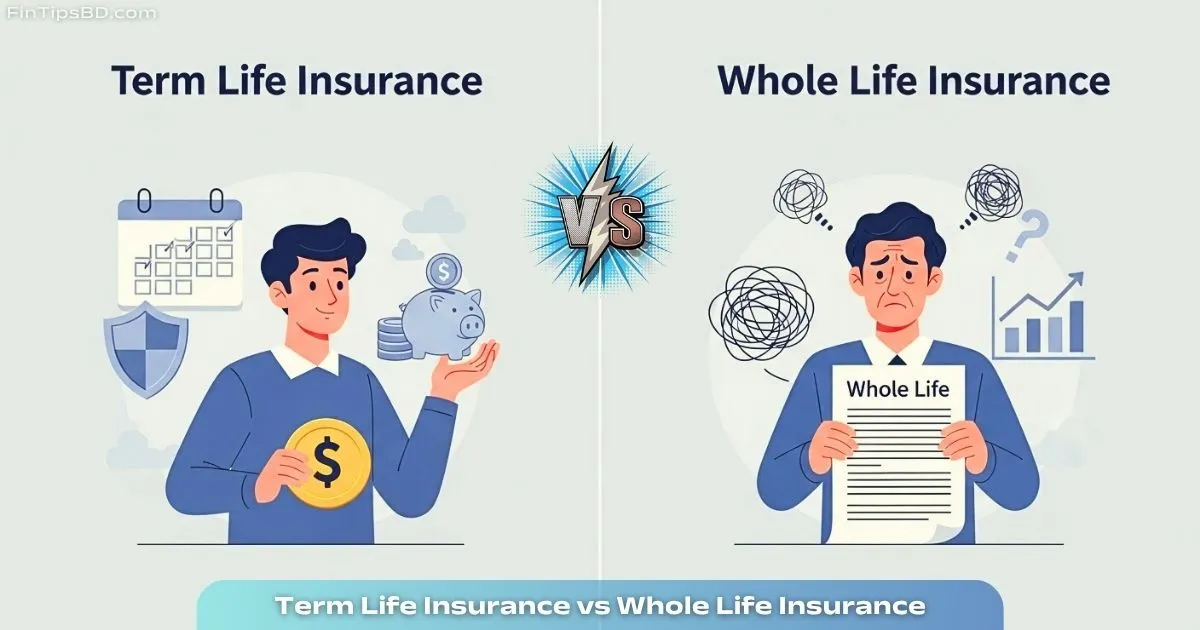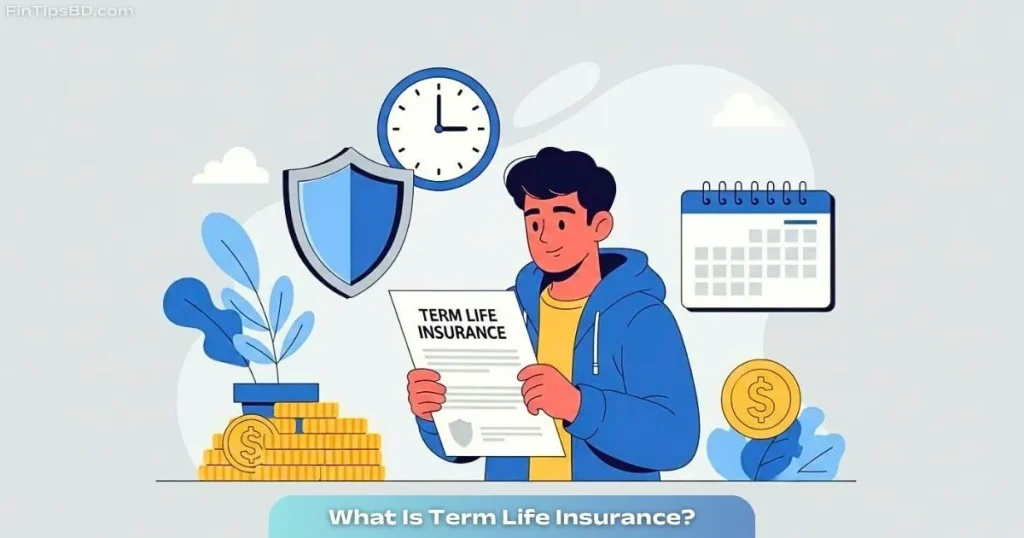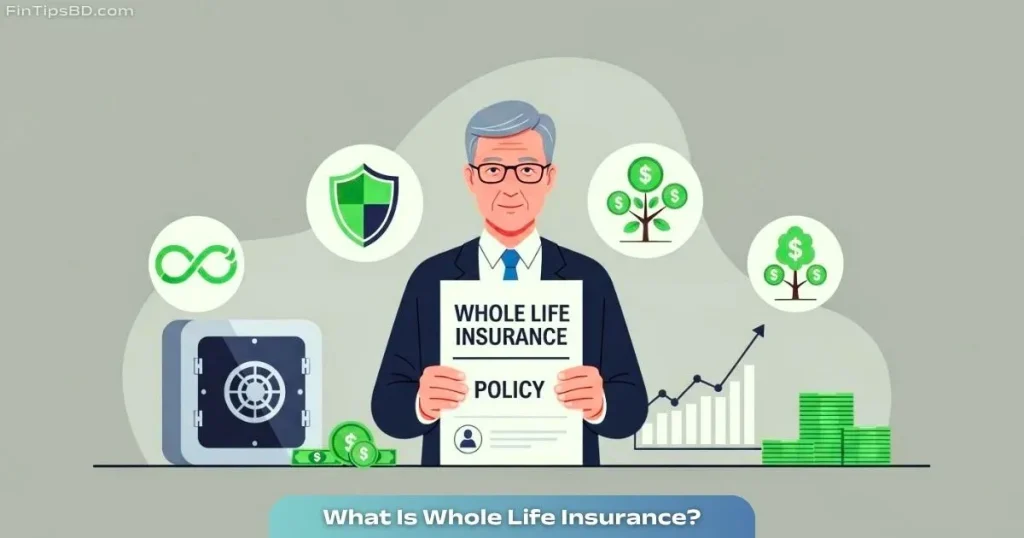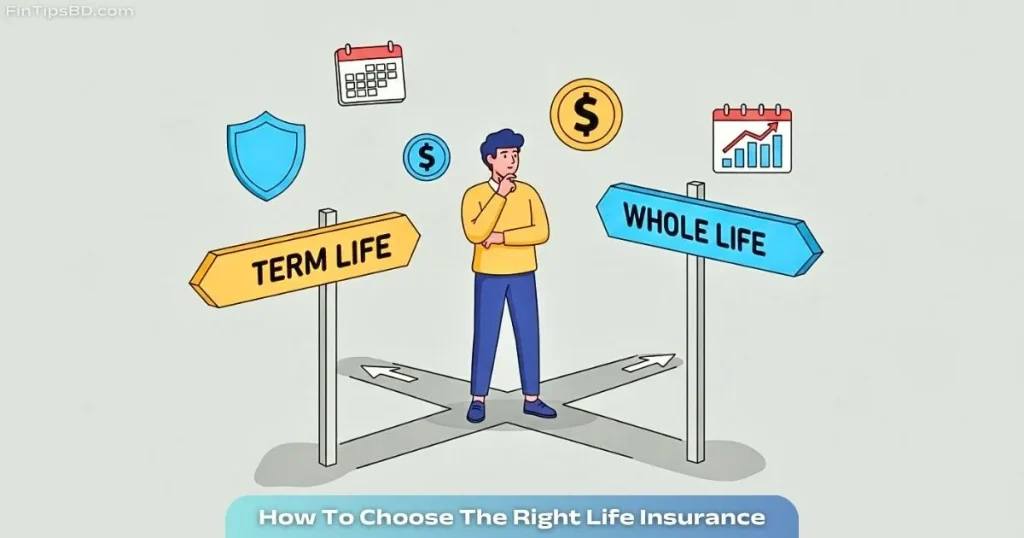Term Life vs Whole Life Insurance – Why Most People Regret Choosing The Wrong One

Deciding between term life vs whole life insurance is a major step in planning your family’s financial future. At first glance, it might seem like an easy choice, but many people later find themselves regretting their decision—either because they paid too much for coverage they didn’t really need, or because they lost coverage at a time they needed it most.
This in-depth guide breaks down both life insurance types, explains the key differences, and shows how making the wrong choice can lead to serious financial consequences.
Table Of Contents
What Is Term Life Insurance?

Term life insurance offers protection for a set period—commonly 10, 20, or 30 years. If the policyholder dies within that time, a death benefit is paid to their beneficiaries. However, if the person lives beyond the term, the policy ends with no payout or refund.
Key Advantages of Term Life Insurance
- Lower premiums: Term insurance is usually far cheaper than whole life policies.
- Easy to understand: These policies don’t include complicated savings or investment features.
- Good for short- to medium-term goals: Ideal for covering specific needs like paying off a mortgage, funding children’s education, or replacing income during the working years.
When Term Life Insurance Makes Sense
Most people choose term life insurance to make sure their family is financially secure during the years when they have big responsibilities—like paying off debt, raising kids, or supporting a spouse. Once those responsibilities fade, the need for coverage typically decreases too.
What Is Whole Life Insurance?

Whole life insurance, unlike term coverage, is a permanent policy meant to last your entire life—as long as you keep paying the premiums. One of its standout features is the cash value, which builds up gradually and grows tax-deferred over time.
Key Features of Whole Life Insurance
- Lifelong protection: Your policy remains active for life, giving you continuous coverage.
- Cash value growth: Over time, part of your premium goes into a savings-like account that you can borrow against or withdraw from when needed.
- Fixed payments: Your premiums stay the same for life, regardless of changes in age or health.
When Whole Life Insurance Makes Sense
Whole life insurance is often a smart choice for people focused on estate planning or leaving an inheritance in a tax-friendly way. It’s also helpful for covering end-of-life expenses or as a conservative financial option for high earners who have already maxed out other retirement plans.
Term Life vs Whole Life Insurance: What’s the Real Difference?
Here’s a side-by-side look at the main contrasts between the two types of coverage:
| Feature | Term Life Insurance | Whole Life Insurance |
|---|---|---|
| Coverage Duration | 10–30 years | Lifetime |
| Premiums | Low | High |
| Cash Value | No | Yes |
| Complexity | Simple | More complex |
| Investment Option | None | Yes – grows over time |
| Flexibility | Can expire | Does not expire |
| Ideal Use | Income protection, debt payoff | Estate planning, long-term asset accumulation |
Why So Many People Regret Their Choice
Choosing between term life vs whole life insurance is a long-term financial commitment, and many people later wish they had picked differently. Often, this regret comes from limited knowledge, poor advice, or high-pressure sales pitches that led them to a policy that wasn’t the best fit.
1. Overpaying for Unnecessary Coverage
A common regret is buying a whole life policy thinking the cash value makes it a better deal. In reality, many would have saved a lot by going with a term policy and investing the difference themselves—often with better results. This is especially true for young families with tight budgets, where every dollar matters.
2. Losing Coverage Later in Life
On the flip side, some people go with term insurance and outlive the coverage. When they try to buy a new policy in their 50s or 60s, premiums are often sky-high—or they may not qualify at all due to health problems. The regret here is not thinking far enough ahead.
3. Misunderstanding How Cash Value Works
Many whole life buyers mistakenly assume they can use the cash value freely or treat it like a regular savings account. But tapping into that money through loans or withdrawals can shrink the death benefit. And if the policy is canceled early, surrender fees can eat into the value, leading to financial loss.
4. Buying What’s Sold, Not What’s Needed
Insurance agents are often paid more to sell whole life policies, which can influence what they recommend. Unfortunately, this means many people end up with policies that don’t match their real needs. In these cases, the regret isn’t just about cost—it’s about being sold something they didn’t actually need.
How to Choose the Right Life Insurance for You

The best choice between term life vs whole life insurance depends entirely on your personal goals, income level, financial responsibilities, and how long you need protection.
Ask Yourself These Question:
- How long do I need life insurance? If it’s just until your kids are grown or your mortgage is paid off, term life is usually enough—and far more affordable.
- Can I afford higher monthly payments? Whole life can cost 5 to 15 times more than term. Make sure those payments won’t stretch your budget too thin.
- Is life insurance part of my bigger financial picture? If you want lifelong coverage, estate planning tools, or a conservative way to grow savings, whole life might be worth considering.
- Do I want something simple or more involved? Whole life policies can be confusing, with rules, fees, and fine print. If you prefer something straightforward, term insurance may be a better match.
A Strategy That Combines Both
Some people find that using a mix of both types works best. For example, you might buy a small whole life policy to handle end-of-life costs, while using a larger term policy to cover income needs during your working years.
This blended approach offers the best of both worlds: affordable coverage now, plus lifelong protection where it matters most—without overspending in your younger years.
Reassessing Your Policy as Life Changes
Life doesn’t stand still, and neither should your insurance plan. Major life events—like getting married, having children, buying a home, changing careers, or retiring—can all affect how much and what kind of insurance you need. It’s important to check your policy every few years to make sure it still fits your current situation.
Final Thoughts
When weighing the choice between term life vs whole life insurance, the biggest mistake you can make is deciding based on emotion, pressure, or incomplete advice. Life insurance is a financial tool—it should be chosen carefully to match your specific needs and future goals.
Whether your aim is to protect your loved ones or to build a long-term legacy, take the time to understand your options. Ask the right questions. Be cautious of one-size-fits-all solutions. Regret usually comes not from buying life insurance—but from buying the wrong kind.
Keywords: term vs whole life insurance, life insurance comparison, best life insurance policy, cash value life insurance, term life insurance benefits, whole life policy advantages, term life vs permanent life insurance, difference between term and whole life, life insurance regrets, permanent vs temporary life insurance
